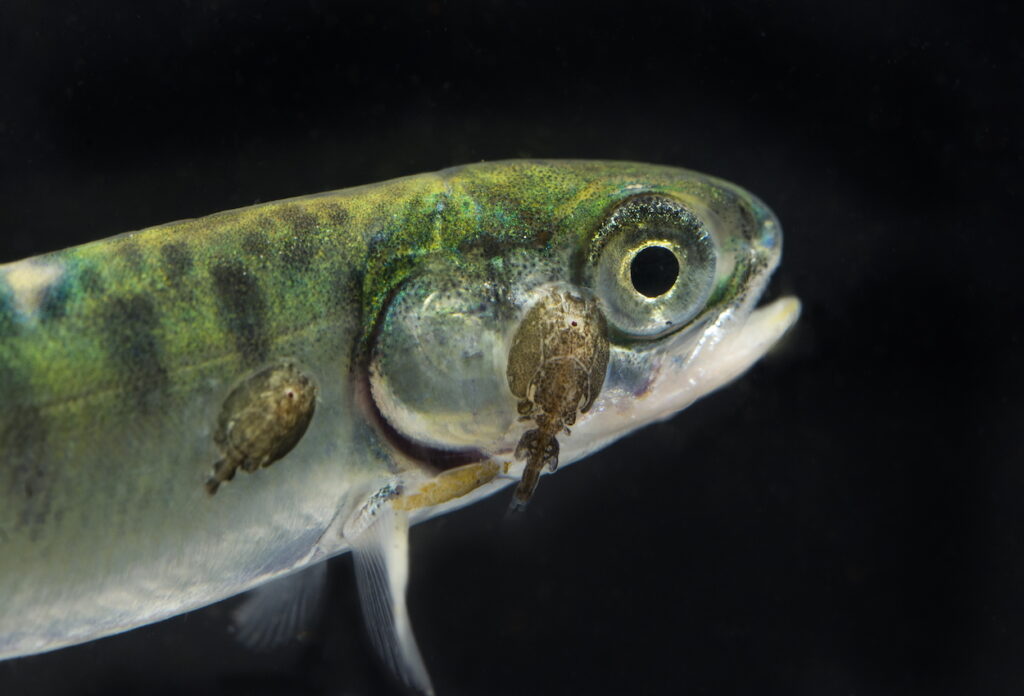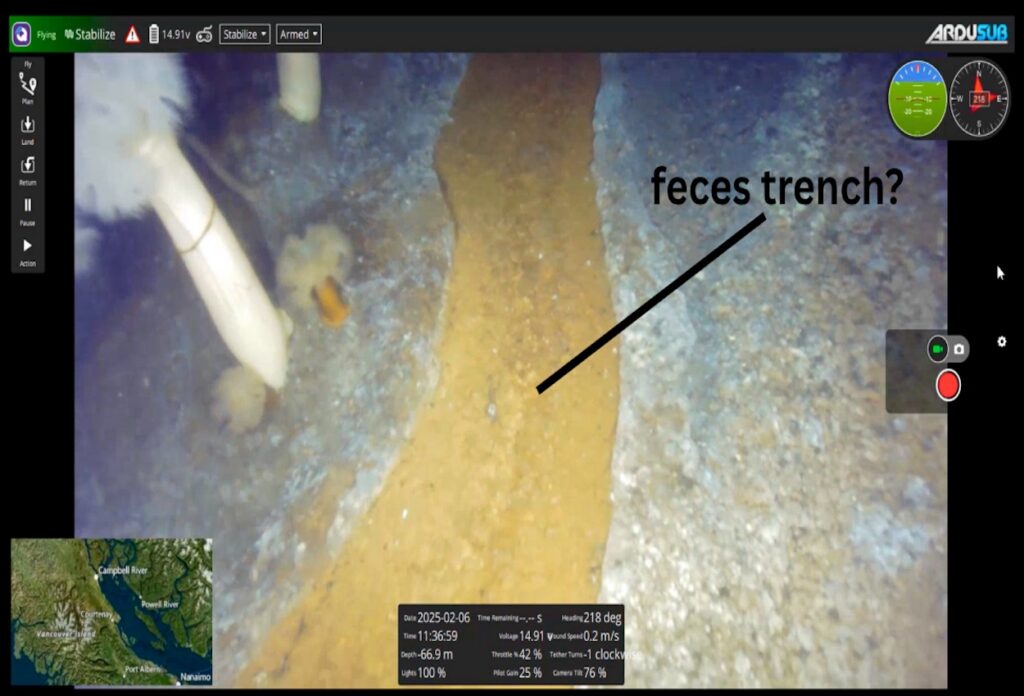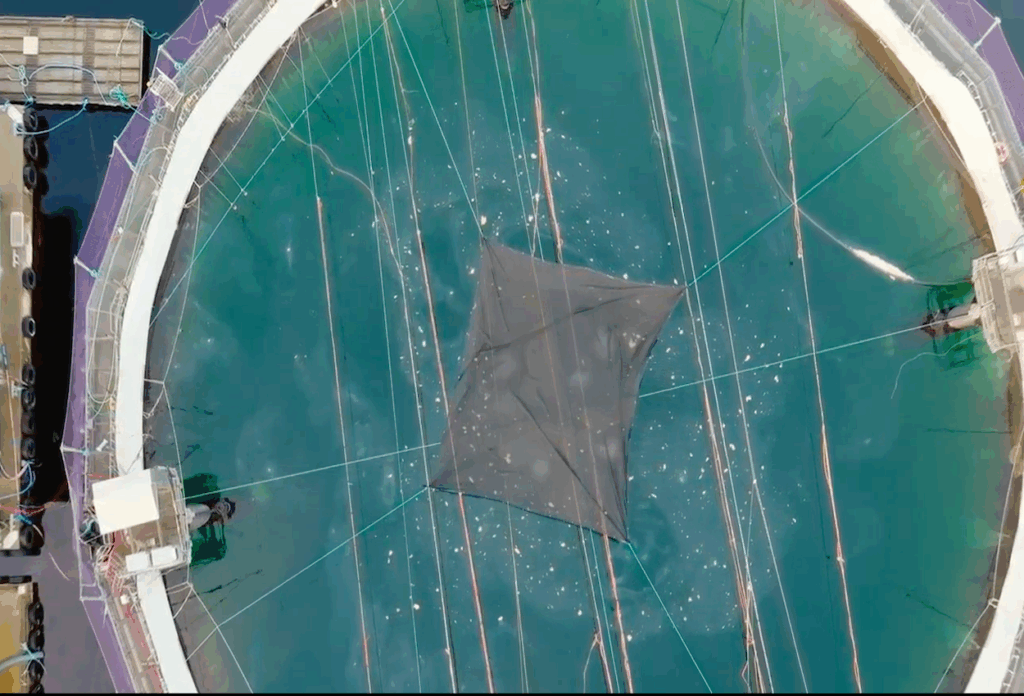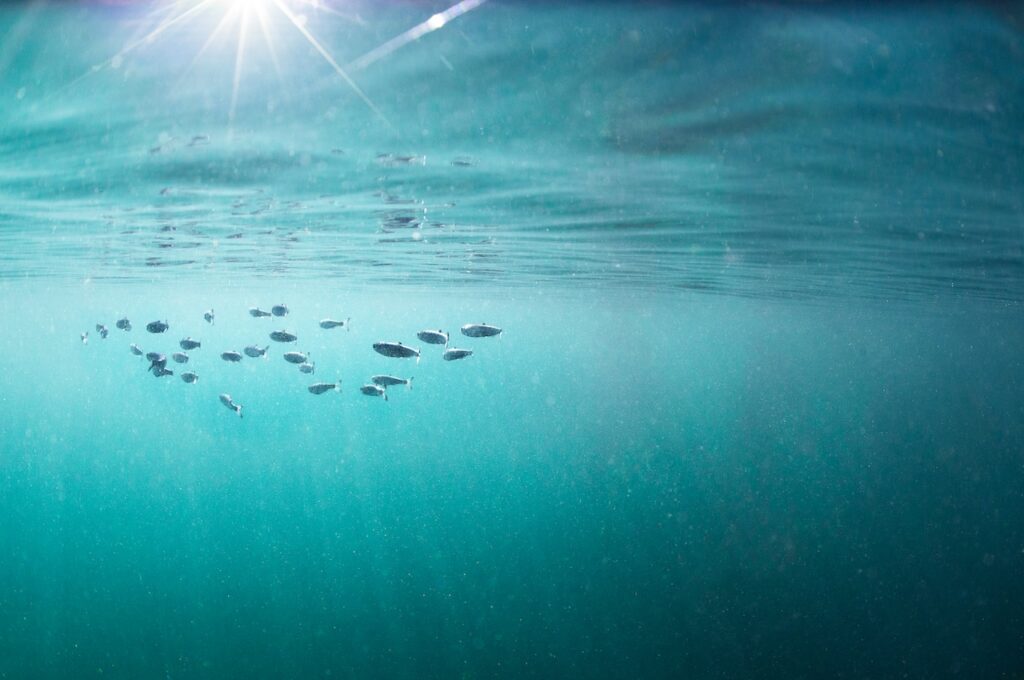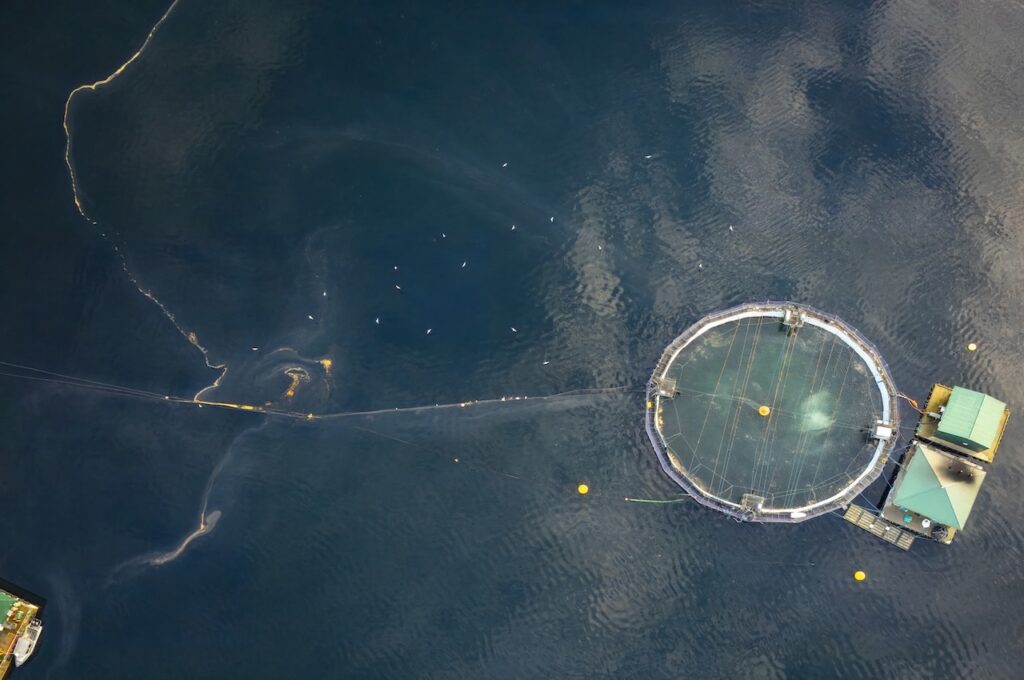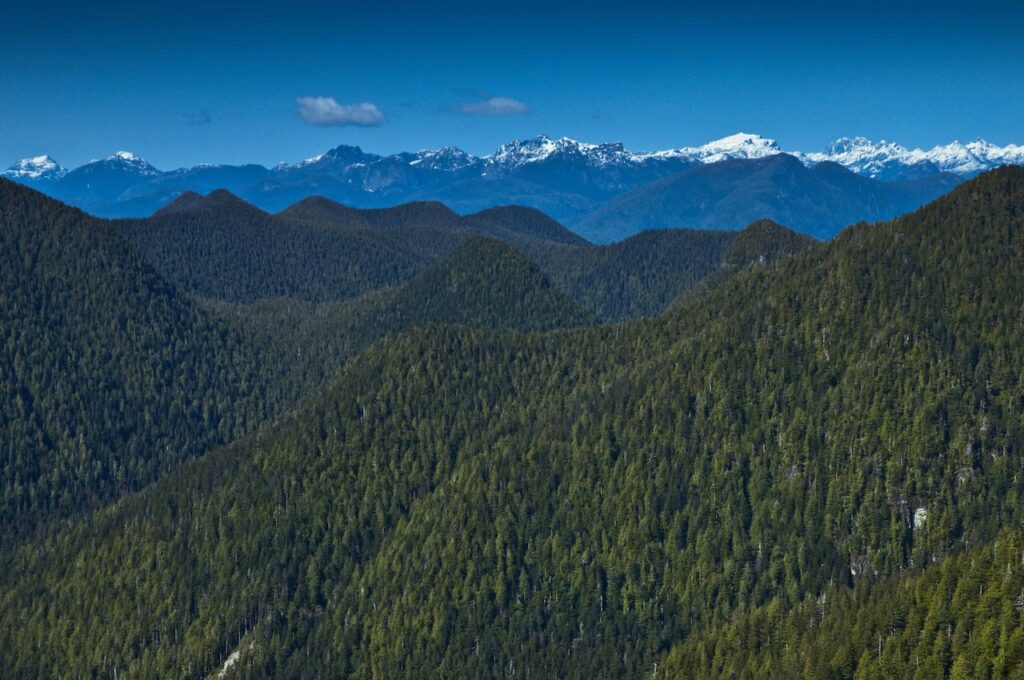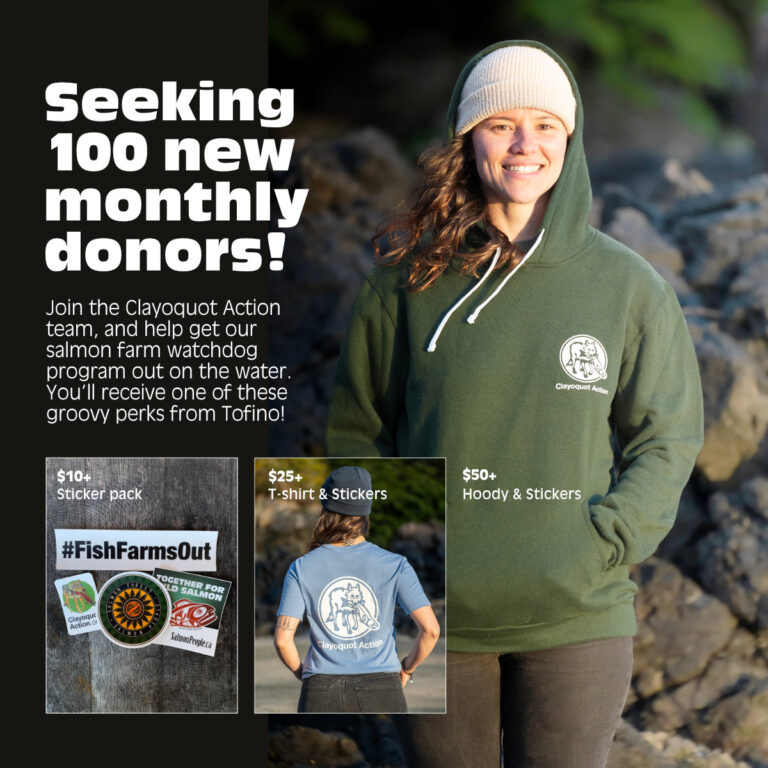Wild salmon are a keystone species in west coast ecosystems. They feed the bears, eagles and orcas, and have sustained Indigenous cultures for millennia. They also provide the nitrogen missing in coastal soils, which is why ancestral cedars grow to such monumental size on Vancouver Island!
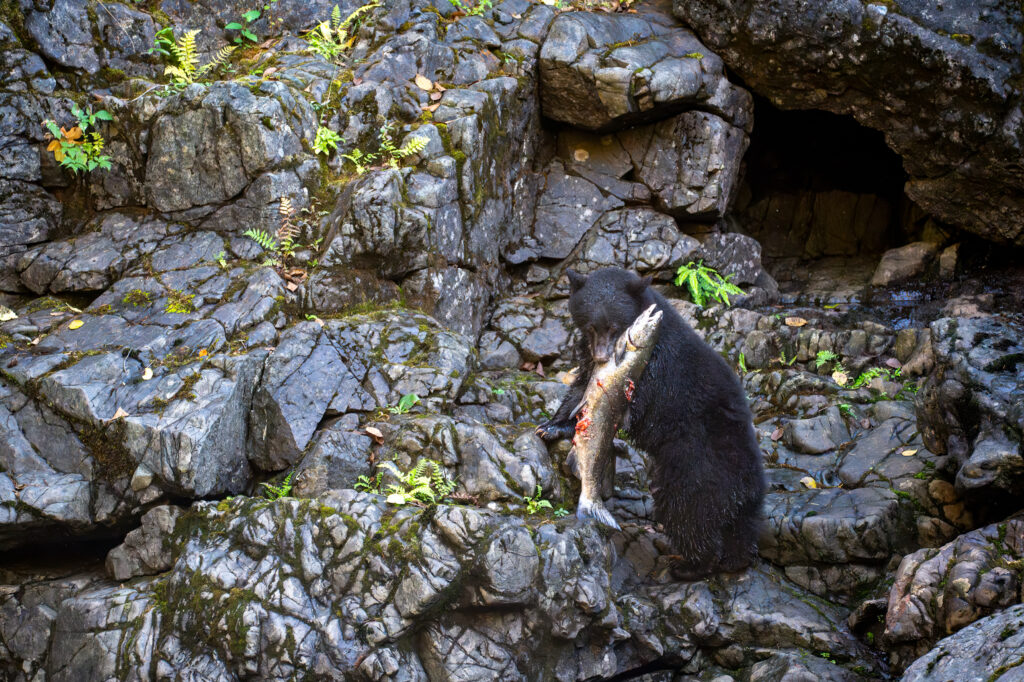
Salmon farming began in Norway in the 1970s. The industry grew rapidly, and the environmental impacts soon became apparent. As the Norwegian government legislated protections for wild salmon, the companies began to invest their profits in places with weaker regulations, expanding the Atlantic salmon farming industry as far away as Chile and Canada.
At first, salmon farming was welcomed on the west coast as a generator of rural jobs. But the jobs soon flat-lined as the industry mechanized. And the environmental impacts began to decimate BC wild salmon populations, which are now at all-time historic lows. In 2024, only one Chinook salmon returned to spawn in the Upper Kennedy River on the highway to Tofino. This is a pathway to extinction…
Open-net pen salmon farms allow for the free flow of pathogens, parasites, poop and uneaten feed into the marine environment. The pathogens are contained in the liquid waste.
Because fish breath by passing water over their gills, it is dead-easy for wild fish to pick up viral particles as they swim by. It’s hard to monitor the effects, because a sick fish will quickly get eaten by predators. But we see the result—less and less wild fish returning to spawn each fall in their natal streams.
First Nations were the first to oppose the industry. Then, in 2017 Kwakwabalas (Chief Ernest Alfred, traditional leader of the ‘Na̱mg̱is First Nation) occupied the Swanson Island fish farm near his home in Alert Bay. The BC government met with leadership and the companies, and a phase-out began which saw 17 fish farms removed from the Broughton Archipelago. Other Nations joined in, and to date 40% of BC salmon farms have been removed from the BC coast. And those Nations are being richly rewarded with abundant returns of Pink and Chum salmon!
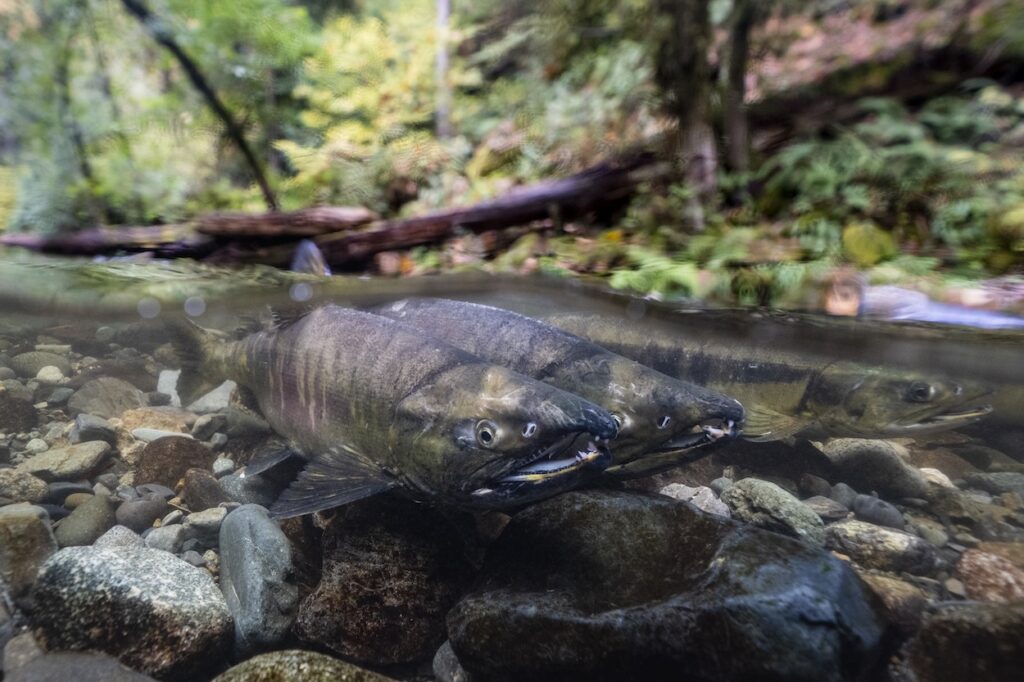
In 2025 the federal government announced a ban on open-net pen salmon farms, to take effect in 2029. To this end they have established a Transition Task Force. At this writing, it looks like the Task Force is considering experimental in-water fish farms, so-called Closed Containment Systems (CCS).
Norwegian giant Cermaq towed their CCS into the Clayoquot Sound UNESCO Biosphere Region back in 2020. Clayoquot Action sent a dive team down to see what was coming out the bottom. What they saw shocked them—a river of feces and feed pellets flowing out the bottom. This dive resulted in the creation of our documentary film, Salmon Secrets, which is winning awards around the world!
Although Norway has been incentivizing these experiments for over a decade, no-one has come up with a system that can protect wild salmon. The only way for this industry to move forward is to abandon their obsolete technology from the 1970s, and move onto land. This is happening now, around the world. If Canada doesn’t embrace land-based closed containment, we will not only lose our wild salmon forever, we risk losing out on economic opportunities.
Dan Lewis is Executive Director of Clayoquot Action.
